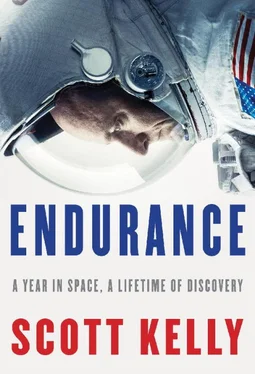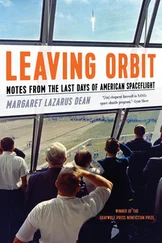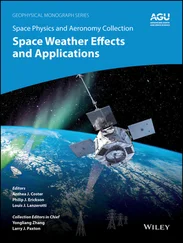Jim Wetherbee, an astronaut who was serving as the director of flight crew operations, came by to talk to us. We all sat around a conference table together, and Jim said, “We’re going to knock this thing off and try again in the new year.” It was now a week before Christmas, and NASA had decided to give the ground crew a chance to go home to their families for the holidays. We were also coming up against another type of conflict: NASA wanted us safely back on Earth before January 1, 2000, because there was so much anxiety about whether equipment would continue to work properly because of Y2K. We joked that NASA was concerned the space shuttle computers would divide by zero and we would travel through a wormhole and end up on the other side of the universe. But the truth was less exciting. Specifically, the concern had to do with the possibility that we would have to land at Edwards Air Force Base in California. The ground support equipment at Kennedy Space Center was all Y2K compliant, as was the orbiter itself, but the equipment at Edwards had not yet been certified. Personally, I thought the public would find it reassuring if NASA, the agency that had put a man on the moon and created a reusable space plane, was so little concerned about Y2K that they flew in space anyway.
“We haven’t made a definite decision yet,” Jim said. “But we’re ninety-nine percent sure this is what we’re going to do.”
He left, and we talked about what this delay would mean for each of us. All of my crewmates seemed pleased—they wanted to go home. I was the only one who didn’t want to see the launch postponed. I had come here with the expectation of going to space, and I didn’t want to give that up and wait weeks before we actually launched. We packed up our things. The guy who holds our wallets for us while we fly in space came around to hand them back out, which made the decision feel final. I prepared to head back to Houston.
Jim came back about an hour later and gathered us together. “Okay, guys,” he said. “We changed our minds. We’re going to launch tomorrow.”
This was tough on my crewmates, who had mentally checked out and started looking forward to going home. I was the only one who was happy, because I was the only one who had never been to space before.
The next day, December 19, as promised, we got suited up for launch. The weather was only 60 percent go, but the countdown continued throughout the day. Several hours before the scheduled launch time of 7:50 p.m., we left the Operations and Checkout Building and waved to the media as we walked to the Astrovan, an Airstream motor home that is used exclusively for carrying astronauts the nine miles to the launch site. The space shuttle, fully loaded with liquid oxygen and hydrogen, was essentially a giant bomb, so when it was fueled the area was cleared of nonessential personnel. As we approached the launchpad, which usually bustled with hundreds of workers, we saw that it was eerily abandoned, the emptiness juxtaposed with the noise of a fully fueled space shuttle—pumps and motors spinning and the creaking metals reacting to supercooled propellants.
We rode the elevator in the launch tower up to the 195-foot level, and Curt entered the orbiter first. The cryogenic fuel passing through the propellant lines created condensation that froze into snow, so even though the weather was warm, some of us had a brief snowball fight while others used the bathroom known affectionately as the Last Toilet on Earth.
Then we entered the White Room one by one, a sterile space around the hatch. When it was my turn, I got into the harnesses for my parachute and fitted the comm cap on my head. Then I kneeled just inside the hatchway while the closeout crew removed the galoshes that kept us from tracking dirt into the spacecraft. Inside the cockpit, everything was pointing up at the sky, so I had to crawl across the ladder, rather than up, in order to get to the flight deck and my seat, which felt like it was hanging off the ceiling. I managed to haul my right leg over the stick, then pull myself up and shimmy into position on the parachute, an uncomfortable bulk under my back. The closeout crew guys, including my friend and astronaut classmate Dave Brown, strapped us into our seats as tightly as they could and helped us get all our connections hooked up—comm, cooling, and oxygen.
We were positioned on our backs for launch, with our knees above our heads, looking straight up at the sky. We were happy to be in our spacecraft, but the position was uncomfortable, especially once we were tightly strapped in.
The preparation for launch was one of the busiest times for the pilot. I was responsible for getting many of the systems ready prior to flight, which meant configuring switches and circuit breakers, starting motors and pumps, and connecting electrical circuits. I configured the reaction control system and the orbiter maneuvering system (the engines that allow the space shuttle to propel itself in orbit). There were many ways I could screw things up so we wouldn’t be able to go to space today, and there were many ways I could screw things up so we’d never go anywhere again. Of course, it was possible to throw the right switches but throw them in the wrong order. (People have even screwed up by failing to throw a switch decisively enough.) I learned to follow the checklists precisely, even when I felt I already knew them, because I needed to be so careful—but not so careful that I got behind the timeline, because if certain things weren’t in the right configuration by a given point in the countdown, the launch wouldn’t proceed. When we were busy, the countdown seemed to go very quickly, but in idle moments it slowed to a crawl.
The countdown clock stopped for the T-minus nine hold. The space shuttle, fully fueled with cryogenic liquid, creaked and groaned. Soon this sixteen-story structure was going to lift off the Earth in a controlled explosion. For a moment I thought to myself, Boy, this is a really dumb thing to be doing.
I had been told that astronauts flying in the space shuttle had a risk of death similar to that of Allied infantrymen on D-day. I knew how the crew of Challenger had died, and I understood that I was now taking the same risks. I wasn’t scared, but I felt aware of the dangers, all at once.
We had been waiting several hours by this point, long enough for some of us to have to use the diaper we wore under our pressure suits. (When the first American to go to space, Alan Shepard, was waiting to launch, a number of technical delays forced him to wait so long that he needed to use the bathroom. He was told to simply go inside his pressure suit, so the first American to leave the Earth did so with wet pants. Ever since, most astronauts have worn diapers or a urine collection device.) Eventually the countdown clock reached the last minute. At thirty seconds, the space shuttle computers took over the launch count. At six seconds, the three main engines roared to life with a million pounds of thrust, but we didn’t go anywhere because the shuttle was bolted to the launchpad by eight giant bolts. At zero, the solid rocket boosters ignited and the bolts were exploded in half, setting the shuttle free. We leaped off the launchpad with an instantaneous 7 million pounds of thrust. I knew from watching videos and from seeing launches in person that the shuttle appeared to rise very slowly at first. Inside, though, there wasn’t a thing about it that felt slow. One second we were sitting on the launchpad, completely still, and the next we were being hurtled straight up faster than would have seemed possible. I was strapped into a freight train gone off the rails and accelerating out of control, being shaken violently in every direction. We went from a standstill to faster than the speed of sound in less than a minute.
Читать дальше












